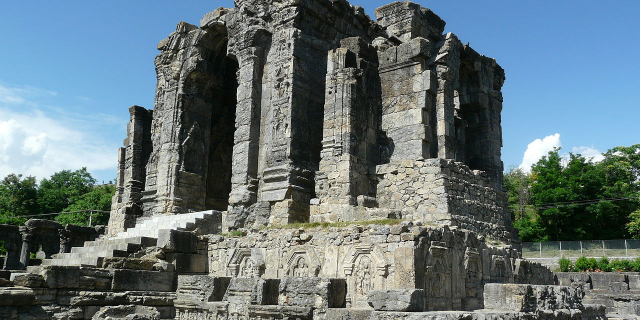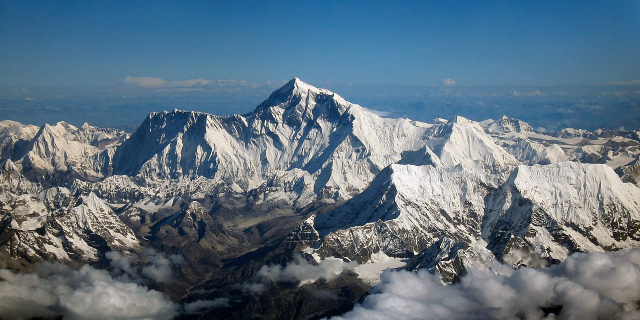मार्तंड सूर्य मंदिर
( Martand Sun Temple )
The Martand Sun Temple is a Hindu temple located near the city of Anantnag in the Kashmir Valley of Jammu and Kashmir (union territory), India. It dates back to the eighth century CE and was dedicated to Surya, the chief solar deity in Hinduism; Surya is also known by the Sanskrit-language synonym Martand (मार्तण्ड, Mārtaṇḍa). The temple was destroyed by Sikandar Shah Miri.
According to Kalhana, the Martand Sun Temple was commissioned by Lalitaditya Muktapida in the eighth century CE.
DestructionAccording to Jonaraja (fl. 1430) as well as Hasan Ali, the temple was destroyed by Sikandar Shah Miri (1389-1413) in a zeal to Islamise the society under the advice of Sufi preacher Mir Muhammad Hamadani;[a] Jonaraja pinned the blame on his chief-counsel Suhabhatta, a Brahman neo-convert who was held to have manifested a reign of intense persecution for the local Hindus whereas Ali particularly affirmed Sikandar's own convictions in these aspects.[1][2][3]
Scholars caution against accepting these sources at face value — Jonaraja was appointed by Sikandar's son, who sought to bring back the Brahminical elite into the royal fold while later Muslim chroniclers had their motives to fit the past into an idealist tale of orthodox Islamic morality. According to Chitralekha Zutshi and Richard G. Salomon, Sikandar's policies were guided by realpolitik[4] and, like with the previous Hindu rulers, an attempt to secure political legitimacy by asserting state power over Brahmans and gaining access to wealth controlled by Brahminical institutions.[5] J. L. Bhan notes a stone sculpture—a four-armed Brahma, sculpted by son of a Buddhist Sanghapati and dedicated to Sikandar—to challenge simplistic notions of religious persecution.[6] Slaje disagrees about an absence of religious motivations but notes the aversion of Brahmin chroniclers to be, largely, the result of resistance to the gradual disintegration of caste-hierarchy under Muslim influence.[7]
DegradationThe ruins and the remnants of structure were further ruined by several earthquakes.[8]
Cite error: There are <ref group=lower-alpha> tags or {{efn}} templates on this page, but the references will not show without a {{reflist|group=lower-alpha}} template or {{notelist}} template (see the help page).



































Add new comment